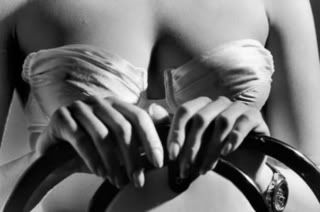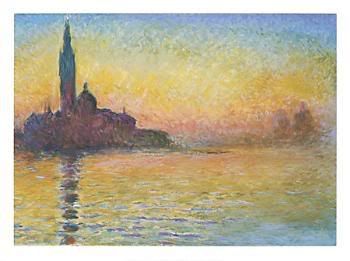
What is abstract and how it pertains to olfaction? Let's question ourselves. If we're talking about abstraction as the thought process wherein ideas are distanced from objects then there is a whole school of offerings that evoke some distant memory of something through the use of non-representational means, just like in art; especially in Lyrical Abstraction (a term originally coined by Larry Aldrich in 1969 to describe what he saw in the studios of artists at that time)or even Abstract expressionism, of which Pollock is a representative example, on to the geometrical stylisation of Yiannis Moralis.
In such a context it is not hard to see that the rendition of an aromatic note, even such a familiar one as orange blossom, can be sublimated in a way that exalts its effect without featuring its true characteristics. In fact without featuring the actual thing at all!
Aromachemical engineers have the additional ability to use a note that naturally is only a top or heart or even base accent and manipulate it in order to make it last longer or for a lesser amount of time. Therefore orange blossom, a note that in its form of "absolute" is a heart to bottom note may appear out of the vial as soon as we open to smell or indeed neroli (the essential oil from orange blossom) might be discernible throughout a fragrance's development.
It is also possible to use aromachemicals that evoke the essence of orange blossoms like the ghost of someone near and dear appearing out of a desire to see them much like Hamlet's father, in a composition that is centered around them yet contains none. Ingredients that could be used include Aurantiol, Methyl Anthranilate, and Oranger Crystals.
Primary examples of this technique would be amply illustrated by Fleur du Mâle the new fragrance by Gaultier, Narciso For Her by Narciso Rodriguez and Castile by Penhaligon's. Indeed those are fragrances that fine though they are feature such an abstract orange blossom that it is spectral in its appearence rather than physical and tangible, like in examples previously mentioned.
Fleur du Mâle by Galtier has already had a full review at Perfumeshrine. Suffice to say that it is the essence of a fluffy cloud, all hay-coumarin and ersatz orange blossom through the eyes of a master of abstraction and could be worn by women just as easily as men.
Castile by Penhaligon's on the other hand is in another vein. Technically also a masculine fragrance, yet highly asexual in its soapy nature, it soars on notes of clean neroli and bergamot at first to warm up just a bit later on with hazy orange blossom, all the while retaining a clean atmosphere of minimalism.
I have a confession to make at this point. When staying at european hotels -the luxurious kind; I avoid the cheap ones after one horrible experience not due to my choosing which however left me probably scarred for life- I love to enter the bathroom first. Gaze at the white clean towels, all pressed and folded, the bath acroutments, lined up for my using, little soaps on the sink, inhale the aroma of cleanliness and proceed to the pulverised sheets on the bed that are starchy and unlined like big sheets of paper on the desk of a writer longing to be filled with ink recounting thoughts and memories of ambiguous value.
This is what Castile evokes in me: staying in a luxury hotel, posing as some person more important than the prosaic historian that I am, halo of far away distance from mundanity fimly placed on my head and not a care in the world behind my aviator sunglasses. "Clean" in a minimal, austere, yet also friendly way without featuring one sharp or musky note.
Narciso by Narciso Rodriguez on the other hand goes into the other direction of "clean". It has been such an influential, seething discovery in my relatively recent perfume past that I have real trouble talking about it. This might sound like a hyperbole and an unsuccessful one at that, yet I assure you that the way it has sneaked its way into my heart with its wiles is astounding. The concentration in the admittedly confusing range that I am focusing on at the moment is the Eau de toilette, with its sexy ambience of clean musks at the background and the inclusion of an abstract orange blossom touch on the foreground.
Nary does a day go by when wearing it that the passing stranger (and a loved one) does not turn to sniff a little longer, lean a little closer, sometimes even comment on it in complimentary terms. Nary does a day go by when wearing it that I am not trasported in a place of contentment, of confidence, of feeling fresh and young and able to conquer the world on a wink or a smile.
To categorise it as clean or as sexy is doing it an injustice. Its erotic power hinges on the creation of a distinguished, sophisticated eroticism which is ethereal and distanced from heavy seductions that in reality repel rather than entice. The absence of saccharine girliness despite the assured overall youthfulness of the composition speaks highly of a sexual being who is ready to consumate the affair with a playful toss of the leg up in the air and not after losing its virginity at the school's prom dance. Whether that would be the net result in the end is fair game to its paws, but nevertheless this is not the iniative on which the fragrance operates. It hums of unmade beds in homes rather than hotels, where the warmth of humans and the life of lovers has found a nest out of the cold harsh mechanical world outside.
Narciso Rodriguez eau de toilette is said to include notes of honey flower, solar musk, orange flower, amberlyn, tactile musk, and tactile woods.
Amberlyn by the way is a petrochemical that is intended to smell a bit like ambergris. Honey Flower is an evergreen shrub (genus Melianthus)native to Cape of Good Hope.
Too abstract for words really in its aroma-synthetic marvel, this Francis Kurkdjian oeuvre is a masterpiece that has it own place in the pantheon of great scents. I am sure that the future will be kind to its beautiful visage.
Painting "Young Girl" 1971 by greek painter Giannis Moralis courtesy of eikastikon.gr
.jpg)











 <
<








